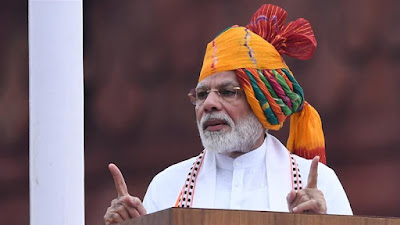How to Get Your Website Ranked on Google
 |
| How to Get Your Website Ranked on Google |
In the modern digital era, establishing a robust online
presence is indispensable for both businesses and individuals.
With millions of websites vying for attention, getting your website to rank on
Google can significantly impact your visibility and success. In this article,
we'll explore effective strategies to improve your website's ranking on Google
and increase your online visibility.
1. Introduction to Google Ranking
Google ranking refers to the position at which a website
appears in the search engine results pages (SERPs) for a particular query.
Websites that rank higher are more likely to attract organic traffic and
potential customers.
2. Importance of Ranking on Google
Achieving a higher ranking on Google can lead to increased
website traffic, brand credibility, and ultimately, more conversions and sales.
Studies have shown that users tend to click on the top search results, making
it crucial for businesses to optimize their websites for better visibility.
3. Understanding Google's Ranking Algorithm
Google's ranking algorithm considers numerous factors to
determine the relevance and authority of a website. Understanding these factors
is essential for optimizing your site for better rankings.
Key Factors Influencing Google Ranking
- Content: High-quality, relevant content is crucial for ranking well on Google.
- Backlinks: The number and quality of backlinks pointing to your site influence its authority.
- User Experience: Factors such as site speed, mobile-friendliness, and overall user experience play a significant role.
- Technical SEO: Optimizing technical aspects like meta tags, URL structure, and site security can improve your site's visibility.
- Social Signals: Social media activity and engagement can indirectly impact your site's ranking.
4. On-Page SEO Strategies
Keyword Research and Optimization
Identify relevant keywords for your niche and optimize your
content accordingly. Utilize tools such as Google Keyword Planner or SEMrush to
pinpoint keywords boasting high search volume and minimal competition.
Content Quality and Relevance
Craft top-notch, informative content that caters to the needs
and preferences of your intended audience. Ensure your content is not only
well-crafted and engaging but also optimized for pertinent keywords.
Meta Tags Optimization
Optimize title tags, meta descriptions, and header tags to improve
your site's visibility in search results. Include target keywords naturally
within these tags to enhance relevance.
URL Structure
Forge SEO-friendly URLs that are clear and straightforward,
steering clear of lengthy, convoluted URLs laden with unnecessary parameters.
Internal Linking
Interlink your website's pages to improve navigation and
distribute link equity throughout your site. Use relevant anchor text to guide
users to related content.
5. Off-Page SEO Techniques
Backlink Building
Secure high-quality backlinks from reputable websites within
your specific industry. Focus on natural link building tactics
such as guest blogging, influencer outreach, and content promotion.
Online Directories and Listings
Secure high-quality backlinks from reputable websites within your specific industry. This can improve your site's visibility in local search results and attract potential customers.
6. Technical SEO Considerations
Site Speed Optimization
Enhance your website's loading speed by compressing images, minimizing CSS and JavaScript files, and making use of browser caching. A faster website improves user experience and can positively impact your search rankings.
Mobile-Friendliness
Ensure that your website is mobile-responsive and displays correctly on all devices. Google prioritizes mobile-friendly websites in its search results, so optimizing for mobile is crucial for better rankings.
Secure Website (HTTPS)
Transition to HTTPS to encrypt data transmitted between your site and users' browsers. Secure websites are favored by Google and may rank higher in search results.
XML Sitemap
Create an XML sitemap to help search engines crawl and index your website's pages more efficiently. Submit your sitemap to Google Search Console to ensure all your pages are indexed.
Structured Data Markup
Incorporate structured data markup (schema.org) to furnish search engines with supplementary context regarding your content. This can enhance your search snippets and improve visibility in rich snippets.
7. User Experience and Google Ranking
Website Navigation
Guarantee your website's navigation is user-friendly and intuitive. Organize your content into logical categories and use clear menu labels to help users find what they're looking for.
Page Layout and Design
Design visually appealing and user-friendly web pages that encourage engagement and interaction. Use whitespace, images, and typography effectively to enhance readability and comprehension.
Mobile Responsiveness
Give precedence to mobile responsiveness to accommodate the escalating number of mobile users. Test your website on different devices and screen sizes to ensure a consistent and seamless experience for all users.
8. Regular Content Updates
Frequently update your website with fresh, relevant content to keep both users and search engines engaged. Regularly publishing new articles, blog posts, or product updates signals to Google that your site is active and authoritative.
9. Monitoring and Analyzing Performance
Keep track of your website's performance using tools such as
Google Analytics and Google Search Console. Keep an eye on pivotal metrics such
as organic traffic, keyword rankings, and conversion rates to pinpoint areas
necessitating enhancement.
10. Conclusion
Securing a prominent rank on Google demands a strategic and comprehensive approach. By focusing on on-page and off-page SEO techniques, optimizing technical aspects, and prioritizing user experience, you can improve your website's visibility and attract more organic traffic.
11. FAQs
Q1: How long does it take for a website to rank on Google?
A1: The time it takes for a website to rank on Google can
vary depending on factors such as competition, content quality, and SEO
efforts. In some cases, websites may start seeing improvements in rankings
within a few weeks, while others may take several months to rank competitively.
Q2: Are paid ads necessary to rank on Google?
A2: While paid ads can provide immediate visibility, they are not necessary to rank on Google organically. With effective SEO strategies and high-quality content, websites can achieve top rankings without relying on paid advertising.
Q3: Can I improve my website's ranking on Google without technical knowledge?
A3: Yes, many SEO tasks can be performed without technical expertise. Focus on creating valuable content,






















